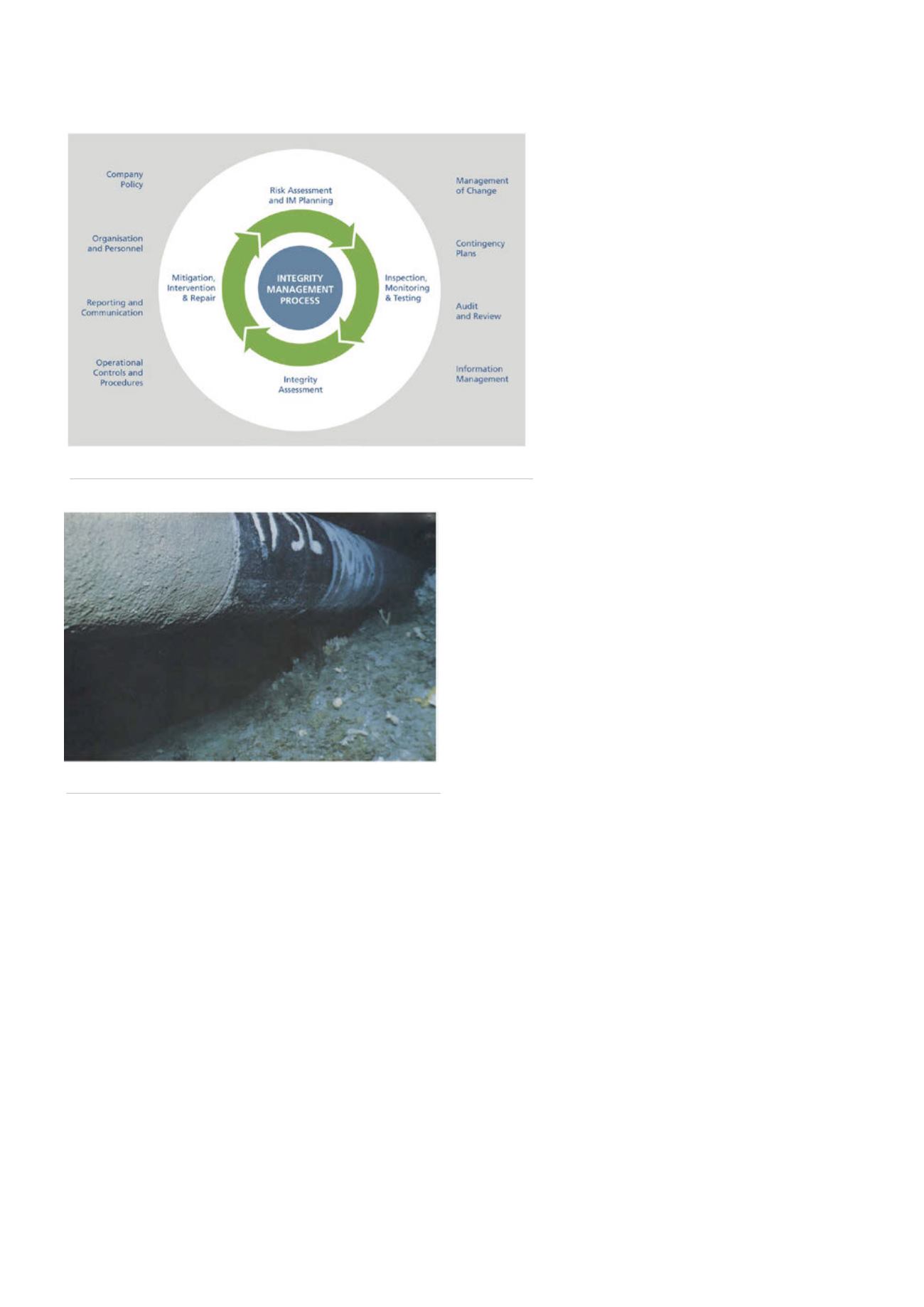
different capabilities and areas of application. Below are the most
common tools and tool carriers used to inspect subsea pipelines:
)
)
General visual inspection (GVI) is the visual inspection carried
out by remotely operated vehicles (ROVs) or divers. GVI
does not include any cleaning but will reveal most external
condition threats to the pipeline.
)
)
Extended visual pipeline survey is a form of inspection that
uses a pipeline work class ROV. Normally this includes 3-view
digital video digital camera, seabed transverse profiles, CP,
and a depth of pipe tracker. This type of survey reveals the
same types of anomalies as GVI with the addition of detailed
span profiles and depth of burial.
)
)
Close visual inspection is a detailed inspection of a specific
area using either a diver or a work class ROV.
)
)
High precision survey is a highly accurate positional survey
that determines the absolute position and relative year-to-
year lateral movement of the pipeline on the seabed.
)
)
Inline inspection (ILI) is an intelligent pigging of
the pipeline utilising various non-destructive
testing (NDT) methods. This measures continuous
end-to-end wall thickness loss and pipeline
anomalies.
)
)
Monitoring evaluates the pipeline using
corrosion probes, impressed current system,
process parameters, fluid composition, chemical
injections, and monitoring of loads, stresses,
strains, displacements, or vibrations.
)
)
Testing looks at the system or function testing of
equipment or control system.
Integrity assessment
IM programmes determine the need for planned
integrity assessments. That said, potentially
unacceptable damage or an abnormality may be
observed or detected, and an integrity assessment is
required to evaluate the damage, or abnormality,
and the possible impact on integrity.
Integrity assessments, planned or unplanned, are most
commonly categorised as follows:
)
)
Corrosion assessments covering internal and external
corrosion.
)
)
Mechanical assessments covering fatigue in free spans, fatigue
in buckles, displacement that causes damage, displacement
that causes overstress, or third party damage causing extreme
strains. The effects of environment on cracking should also be
considered.
An IM programme typically specifies applicable assessment
codes for various types of damage or abnormality. Table 1
provides an overview of available assessment codes for the
most common damage or anomalies that impact the integrity of
subsea pipelines.
Mitigation, intervention and repair
The main activities related to mitigation, intervention, and repair
generally include detailed planning of the operation, technology
qualification, and (if necessary) the mobilisation, execution of the
operation, and documentation. Mitigating activities are, for the
most part, measures related to the internal pipeline condition.
Typical means of mitigating activities are:
)
)
A restriction in operational parameters such as maximum
allowable operating pressure, inlet temperature, flowrate,
and number of given amplitudes of these. Such restrictions
may have an impact on the set-point value for the pressure
protection system or the pressure regulating system.
)
)
Use of chemicals to inhibit corrosion, improve flow,
reduce scaling, or avoid hydrate formation.
)
)
Maintenance pigging with the objective of removing scale,
deposits, liquid accumulation in sag bends. This could
Figure 2.
Submarine pipeline under free span.
Figure 1.
IM system.
66
World Pipelines
/
FEBRUARY 2016


